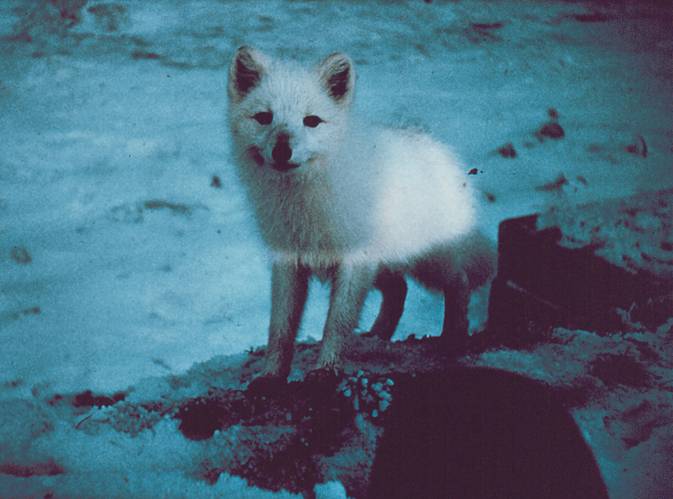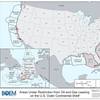Arctic Animals Manifesto
In the years that I have been authoring this column, I have seen and commented on numerous developments of interest. None have been as unexpected, though, as the below document which inadvertently came to my attention. Rumors have swirled recently of unrest in the Arctic, but few suspected that it had reached this level. I submit the document unedited for the careful consideration of my long-suffering readers.
Manifesto
Those of you fellow Arctic animals who have been paying attention could not have helped but notice that human beings are increasingly entering our environs without our permission and with little or no concern for our well-being. I refer not to the small population of native humans (calling themselves various names), but to those humans that normally reside in the temperate or equatorial climates (outsiders). We have a long-established relationship with the native humans, based on mutual respect and the understanding that the harsh but fragile Arctic environment is our common concern.
Outsiders, though, lack that mutual respect and understanding. They are so accustomed to molding and dominating their environment that they blithely assume the same can be accomplished in the Arctic. Their naiveté places us and our environment at unnecessary risk. It is incumbent upon all Arctic animals to exert maximum effort to bring these incursions by outsiders to an end, at least until such time as they have acquired the level of awareness exhibited by native humans.
Outsiders possess technology far in advance of our own. It would therefore be foolish to directly oppose them. Fortunately, outsiders are easily dissuaded and are even easier to mislead. We Arctic animals must therefore engage in a concerted effort of misinformation.
Most outsides are focused on monetary gain. They are not coming to the Arctic to experience the unmatched landscapes or learn about the complex ecosystem. Rather, they are coming to exploit the wealth that has remained hidden from view for countless eons. They seek energy resources – oil, natural gas, and coal. They seek mineral deposits – gold, silver, zinc, copper, iron, nickel, and rare earths. We are concerned lest the outsiders, in their drive to accumulate monetary wealth, inadvertently cause permanent harm to our homes and our environment.
One of our biggest assets is the smugness of the outsiders. They assume that, because they largely dominate the temperate regions, they can do likewise in the Arctic. Equipment and techniques that work well in other regions often prove of little moment in our domain. The Arctic environment holds many surprises, often unpleasant, for the neophyte outsider.
Outsiders also assume that they are superior to us. While they have many advantages, they are not omnipotent. They are also not accustomed to operating in our environment. As some would say, we have the home field advantage. We are also wise in ways that outsiders cannot comprehend. Because they are arrogant, outsiders are somewhat easy to outwit.
Outsiders have tried to bring floating rigs into the Arctic in efforts to locate and exploit offshore oil and gas deposits. These rigs are huge but fragile. I propose that whales push ice floes at these rigs, forcing them to discontinue operations and move to avoid contact. Other creatures could work to foul their cooling systems, forcing expensive and time-consuming repairs. Marine mammals and large fish could haul nets, lines, kelp, and other material into the rigs’ delicate and expensive dynamic positioning (DP) equipment. At this point it is useful to note that we animals perfected dynamic positioning eons ago, but the outsiders give us no credit. Birds could carpet-bomb the rigs and support vessels, turning them into virtual guano islands.
Before the outsiders commence use of their floating rigs, they conduct what they consider sophisticated surveys of the seafloor and the seabed. This is generally done by slowly dragging long cables behind specialized ships. Sonic signals are generated. The cables receive the echoes as the signals reflect off the seabed and its various constituents. I propose that whales and walruses swim just below the long cables. As the sonic signals are generated, the whales and walruses should emit their own sounds – songs, clicks, belches, and farts – that will mask the seabed echoes and provide erroneous information. This could well lead the outsiders to explore the wrong areas and then to conclude that there are few exploitable resources.
Outsiders are rightly concerned about the welfare of threatened and endangered species. They don’t, though, know exactly which such species inhabit the Arctic and where. Therefore, it is incumbent upon you threatened and endangered animals (you know who you are) to leave some evidence of your presence (feathers, fur, eggs, feces, etc.) so that the outsiders can start designating critical habitats. Many of you who are not in that category have friends in other areas who are threatened or endangered, such as piping plovers, leatherback turtles, whooping cranes, and the spotted owl. Invite them up to the Arctic for a short visit or have them send some evidence (see above) that can be distributed in select locations. It will drive the outsiders absolutely bonkers.
Many outsiders recognize the harm they have done over many years to marine mammals, particularly whales and seals. For that reason, they exert special effort to avoid injury to this group of animals. We can turn that to our advantage. Our indigenous whales, particularly the bowhead, beluga, and narwhal, should congregate in the vicinity of outsider activity in Arctic waters. Invite your friends from warmer climes to join you. Host a swim-in! Most outsiders will quickly move elsewhere.
Migratory birds also receive special protections from many (but not all) outsiders. These birds (and all birds in the Arctic are migratory) should build nests in the vicinity of outsider activity. Even if you have no plans to occupy the nest, build it as close as possible to the activity. Outsiders will never suspect that you have ulterior motives (see my previous comments on smugness). They will identify the nest and undertake remedial action.
Cruise ships full of outsiders have begun sightseeing journeys through Arctic waters. This will be the first and probably only trip to the Arctic for many of these individuals and provides us with an excellent opportunity to shape public opinion. These outsiders will go gaga over baby animals, particularly baby polar bears, baby seals, and baby whales. Mothers of these babies should station their offspring at strategic intervals along the route of the cruise ship and the babies should be encouraged to look up at the outsiders with sad and wistful eyes. When these outsiders return home they will become vocal advocates for leaving the Arctic in a pristine state.
The entire Arctic animal community is counting on each of us take action to deter and deflect outsiders from further incursions. Do your part and encourage your friends and neighbors to get involved. This is an all-hands evolution.
Signed: The Arctic Fox
Dennis L. Bryant,
Maritime Regulatory Consulting, Gainesville, FL,
Tel: 352-692-5493
Email: dennis.l.bryant @gmail.com
(As published in the December 2012 edition of Maritime Reporter - www.marinelink.com)



















